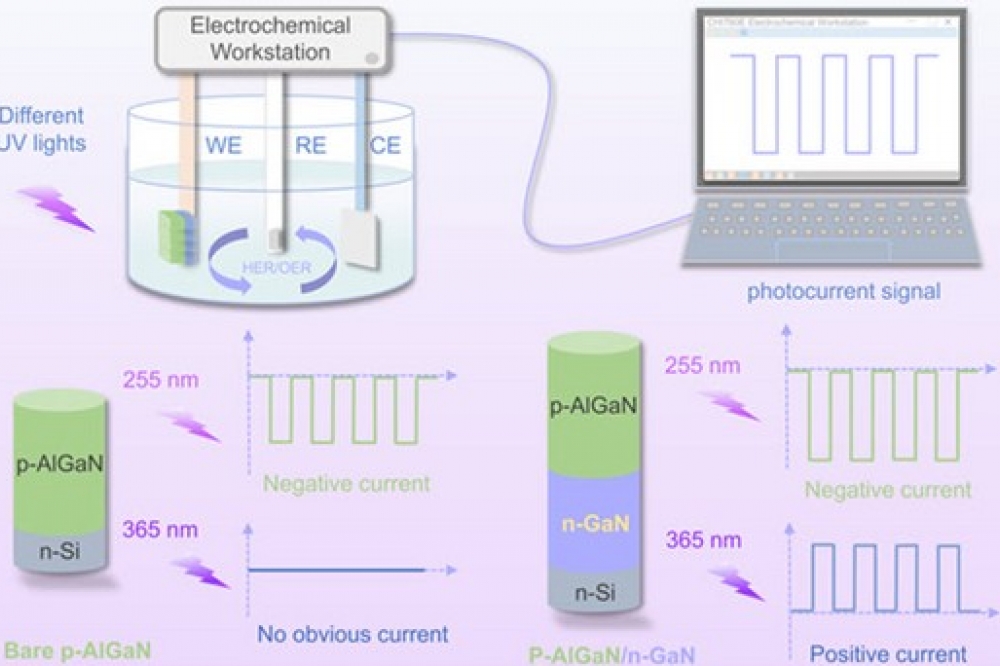Researchers develop self-powered UV photodetector

Photoelectrochemical photodetector can detect two types of UV light using layered nanostructure
Researchers from Nanjing University of Posts and Telecommunications (NJUPT) and Nanjing University have designed a photoelectrochemical ultraviolet photodetector (PEC UV PD) that can detect two types of ultraviolet light by using a special type of nanostructure made of different layers.
This design makes the detector sensitive to changes in the environment, and the researchers were able to further enhance the detector's performance by modifying its surface. This new design offers a promising strategy for developing multifunctional optoelectronic devices.
The research team used a layered p-AlGaN/GaN nanostructure as an electrode in a three-electrode system to study how it detects light. They found that tiny semiconductor GaN nanowires are essential in controlling the flow of electrical current and reversing the direction of photocurrent in response to different types of light. They discovered that the nanowires act as a light absorber under 365-nm light while also serving as an electron-donor when exposed to 255-nm light, which helps to regulate photoresponsivity at varying wavelengths.
According to the team, the PEC UV PD design is able to distinguish between different light wavelengths by using layered AlGaN/GaN nanowires instead of bare AlGaN nanowires, achieving photocurrent polarity reversal at two different points. This makes it sensitive to changes in the surrounding environment, allowing for easy regulation of photoresponse through light intensity and external bias. Furthermore, by including platinum in the surface modification with the PEC PD, researchers were able to enhance the photoresponse and achieve fast response speeds of 20 ms at 255-nm light.
According to Dunjun Chen, professor of Electronic Science and Engineering and one of the corresponding authors of the work: “We focused on the importance of the GaN segment in this system and showed how it affects the way the system transports energy.” Chen adds: “This self-powered PEC photodetection system offers a new way to understand the transport mechanisms in AlGaN/GaN nanowire PEC systems, which could lead to the development of even more advanced optoelectronic devices in the future.”
Pictured above: Working diagram, working mechanism, and photocurrent signal of the p-AlGaN/n-GaN based PEC UV PD under different wavelengths.
Reference
'Structural designs of AlGaN/GaN nanowire-based photoelectrochemical photodetectors: carrier transport regulation in GaN segment as current flow hub' by S. Wang et al; Adv. Photon. Nexus 2(3) 036003 (2023)


































